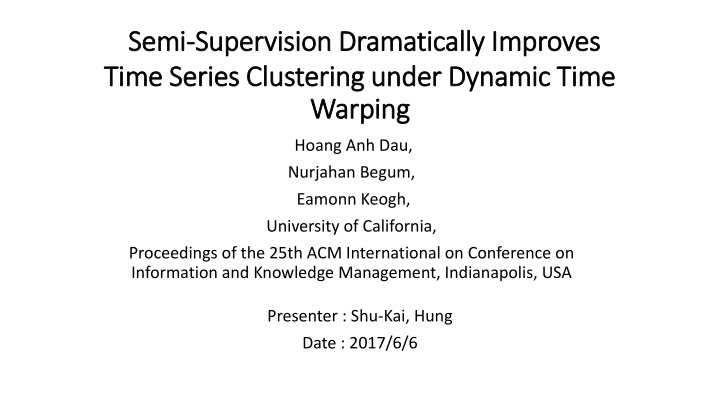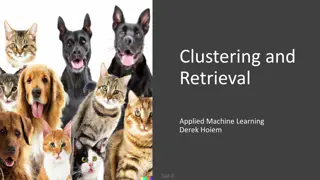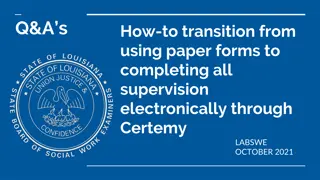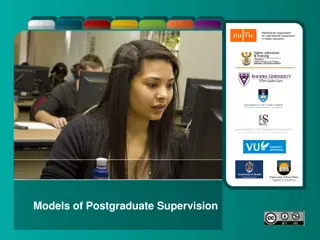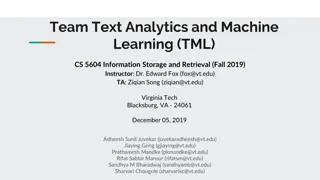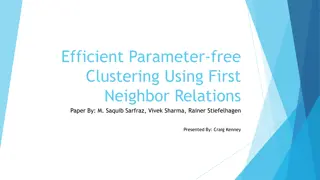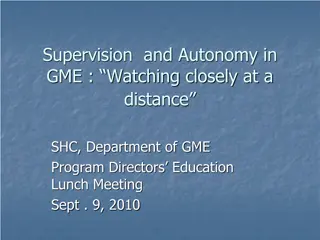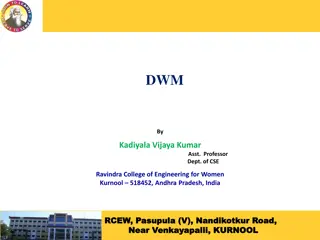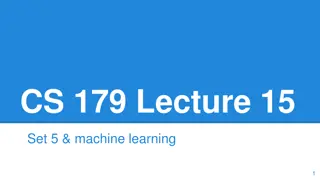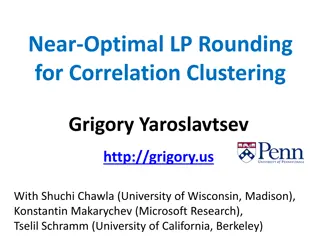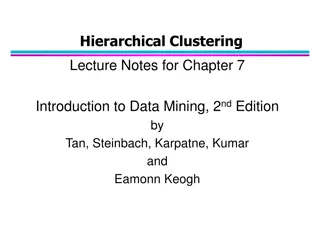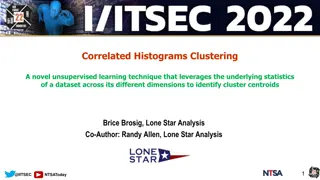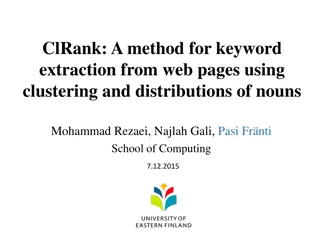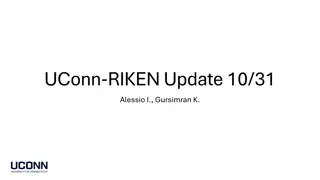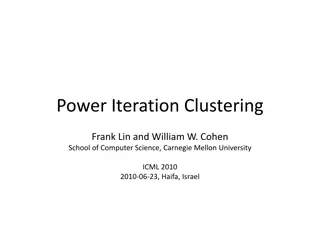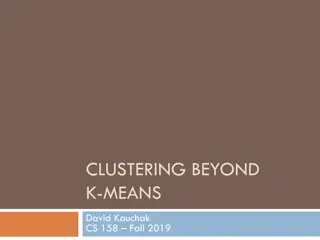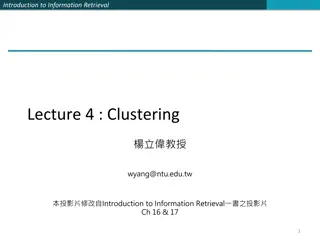Improving Time Series Clustering with Semi-Supervision Techniques
Research on how to optimize the dynamic time warping parameter for time series clustering, introducing a novel semi-supervised technique for enhanced clustering performance across various algorithms. Includes insights on overcoming challenges in setting parameters without labeled data.
Uploaded on Apr 24, 2025 | 0 Views
Download Presentation

Please find below an Image/Link to download the presentation.
The content on the website is provided AS IS for your information and personal use only. It may not be sold, licensed, or shared on other websites without obtaining consent from the author.If you encounter any issues during the download, it is possible that the publisher has removed the file from their server.
You are allowed to download the files provided on this website for personal or commercial use, subject to the condition that they are used lawfully. All files are the property of their respective owners.
The content on the website is provided AS IS for your information and personal use only. It may not be sold, licensed, or shared on other websites without obtaining consent from the author.
E N D
Presentation Transcript
Semi Semi- -Supervision Dramatically Improves Supervision Dramatically Improves Time Series Clustering under Dynamic Time Time Series Clustering under Dynamic Time Warping Warping Hoang Anh Dau, Nurjahan Begum, Eamonn Keogh, University of California, Proceedings of the 25th ACM International on Conference on Information and Knowledge Management, Indianapolis, USA Presenter : Shu-Kai, Hung Date : 2017/6/6
Abstract(1/2) The research community seems to have converged in agreement that for time series classification problems, Dynamic Time Warping (DTW)- based nearest-neighbor classifiers are exceptionally hard to beat. Obtaining the best performance from DTW requires setting its only parameter, the warping window width (w). This is typically set by cross validation in the training stage. However, for clustering, by definition we do not have access to such labeled data. This issue seems to have been largely ignored in the literature, with many practitioners simply assuming that the larger the better for the value of w, and using as large a value of w as computational resources permit.
Abstract(2/2) In this work we show that this is a naive approach which in most circumstances produces inferior clusterings. To address this problem, we introduce a novel semi-supervised technique that allows us to set the best value of w. Unlike virtually all other semi-supervised techniques, our ideas are completely independent of the clustering algorithm used, and can be utilized to improve time series clustering under partitional, hierarchical, spectral or density-based clustering. Our approach requires very little human intervention; moreover, we show that in many cases, true human annotation efforts can be replaced with automatically-generated pseudo supervision information. We demonstrate our technique by testing with more than one hundred publicly available datasets.
constraint Dynamic Time Warping (cDTW) Constraint warping path
Rand Index N time series N(N-1)/2 TP TN FP FN Rand Index RI = TP+TN / TP+FP+FN+TN
semi-supervised technique Supervised : Training a w => 1. we know the label. 2. we give a w to test it. 3. Modifying the objective function for evaluating candidate clustering. semi-supervised : 1.don t know every thing first. 2.know the fact then verify
Choosing Constraints Choosing Constraints For every possible pair of time series, constraint vector =(0,1,0,1,0, ..,0,1,1) every pair satisfied or not.???? ? ????? ? ?? ? ????????. Satisfy => correct clustered( TADPole algorithm )
Pseudo User Annotation Pseudo User Annotation The basic idea : An object ?, copy this object ? and give some warping = ?,
